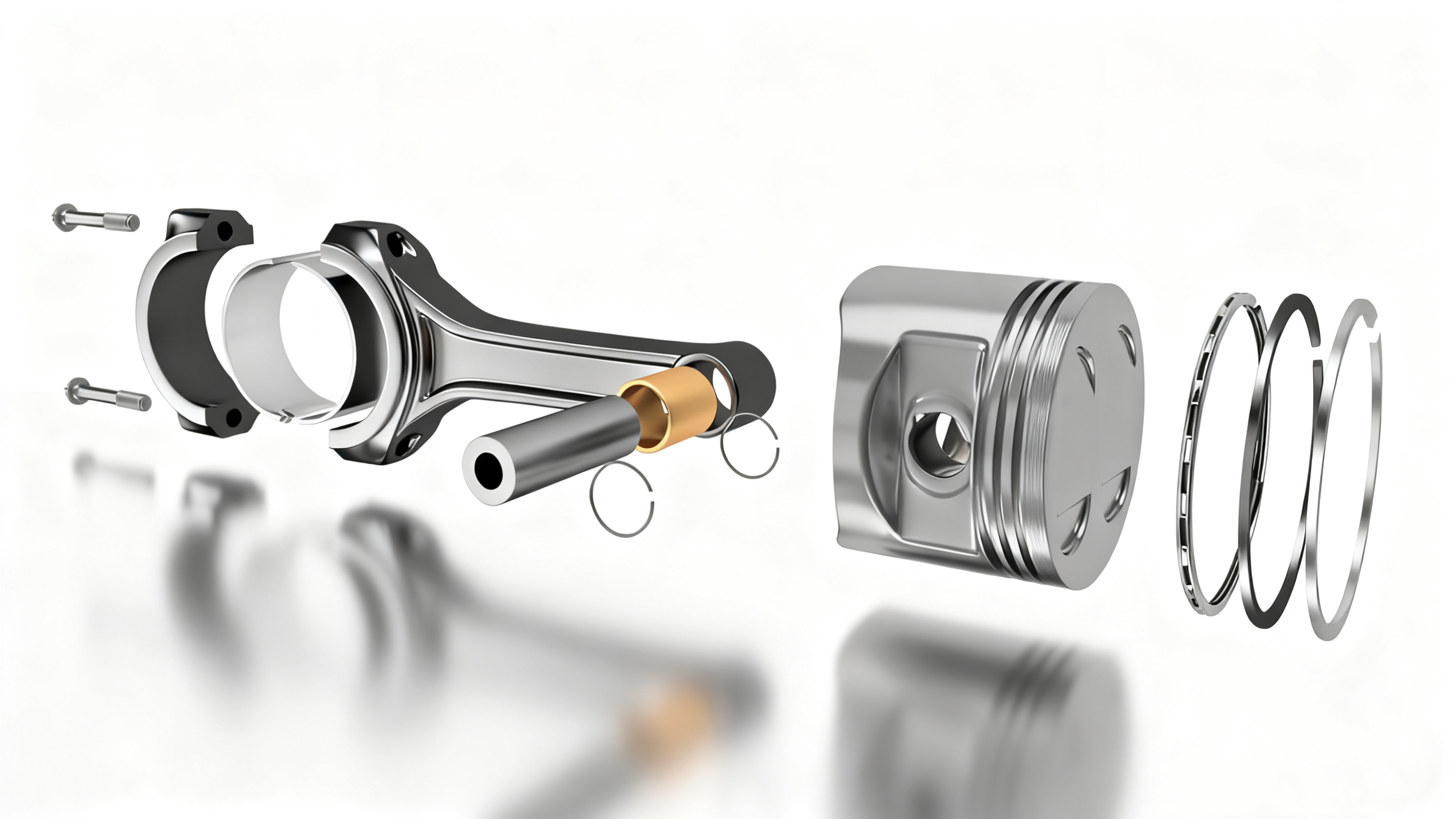Language
Currency


Introduction:
A piston is at the heart of most internal combustion engines, playing a critical role in converting fuel energy into mechanical power. Its design, materials, and structure are pivotal in ensuring efficient engine performance. In this article, we will delve deep into what a piston is, its key functions, essential parts, and the various types commonly used in automotive applications.
1. Understanding the Primary Function of a Piston
The simplest way to think about a piston is that it functions as a moving plug in the engine cylinder. When the air-fuel mixture is ignited, the resulting combustion forces the piston downward. This linear motion is then transmitted to the crankshaft through the connecting rod, ultimately turning it into rotational motion. In other words, the piston serves as a mechanical link that transforms chemical energy into useful mechanical energy, so your vehicle can run smoothly.
2. Key Parts of a Piston
A typical piston consists of several essential parts:
Head or Crown: This is the top surface responsible for withstanding combustion pressures and heat.
Skirt: The lower portion that guides the piston’s movement within the cylinder, ensuring proper alignment.
Ring Grooves: These grooves hold piston rings, which prevent gas leakage and control lubrication.
Piston Rings: Sealing rings that maintain compression, manage oil, and reduce friction.
Piston Pin or Wrist Pin: A cylindrical pin that connects the piston to the connecting rod, allowing the piston to pivot.
Each part of the piston serves a distinct purpose. Together, they help optimize combustion efficiency, reduce friction, and prolong engine life. Automotive pistons must be robust yet lightweight to deliver consistent performance.
3. Common Piston Types in Automotive Engines
Pistons come in various designs and materials, each engineered to cater to specific performance requirements:
Flat-Top Pistons: A standard design that strikes a good balance between combustion efficiency and fuel economy. Commonly found in everyday vehicles.
Domed Pistons: Features a raised crown to increase compression. Ideal for engines requiring higher power output.
Dish Pistons: Includes a concave bowl on the piston head to facilitate better fuel-air mixing, often found in turbocharged or supercharged engines.
Forged Pistons: Made by compressing and shaping heated metal for extra strength and heat resistance; commonly used in racing and high-performance engines.
The choice of piston type hinges on the engine’s intended purpose, desired power, and thermal efficiency. Understanding these differences can help mechanics, manufacturers, and automotive enthusiasts pick the perfect solution for their engines.
4. Why Material Selection Matters
Selecting the right materials is paramount for extending piston life and engine performance. Aluminum alloys are commonly chosen because of their lightweight composition and excellent thermal conductivity. For high-performance or heavy-duty applications, some pistons incorporate steel or specific alloy reinforcements to handle extreme pressures and temperatures. The goal is to balance strength, heat dissipation, and weight, ensuring optimal engine efficiency.
5. Trends and Innovations in Piston Design
As the automotive industry advances, piston technology continues to evolve. Some recent trends include:
Surface Coatings: Wear-resistant coatings reduce friction and prolong the lifespan of piston components.
Lightweight Alloys: Innovative aluminum and composite blends help reduce overall engine weight, improving fuel economy.
Advanced Manufacturing: Methods like forging, stamping, and precision casting yield consistent, high-grade pistons with minimal defects.
These developments ensure that internal combustion engines remain efficient, reliable, and more environmentally friendly, even amid the growing popularity of electric vehicles.
6. Practical Considerations for Maintenance and Replacement
Although pistons are built to last, they are still susceptible to wear and tear due to constant friction and high temperatures. Key points to watch include:
Engine Knocking: Unusual vibrations or pings often point to piston problems or ring misalignment.
Excessive Smoke: Blue or white smoke from the exhaust can indicate damaged piston rings or worn grooves.
Oil Consumption: Rapid drop in oil levels can suggest leaky piston rings, risking engine performance.
Regular inspection, timely oil changes, and using quality replacement parts can help keep your engine running at peak efficiency.
Conclusion
The piston is an essential engine component, directly impacting power output and overall reliability. Its parts, functions, and material choices must be carefully integrated to achieve optimal performance. Whether you are a mechanical enthusiast, an automotive professional, or simply curious about what goes on under the hood of your car, understanding pistons is key to appreciating how engines convert spark into motion.
Looking for top-notch auto parts? Ningbo Ruican Machinery Co., Ltd. could be your reliable partner. Established in 2009, the company specializes in carbon steel, low alloy steel, stainless steel, grey iron, and ductile iron products, including auto parts. With advanced casting processes, a dedicated manufacturing team of over 50 employees, and an export ratio of 50%, Ningbo Ruican Machinery Co., Ltd. has the expertise to deliver durable, high-quality components right on schedule. For more information, feel free to visit http://www.cnsandcasting.com or contact us at sales@cnsandcasting.com.
Email cannot be empty
Password cannot be empty
Email format error
Email cannot be empty
Email already exists
6-20 characters(letters plus numbers only)
The password is inconsistent
Email format error
Email cannot be empty
Email does not exist
6-20 characters(letters plus numbers only)
The password is inconsistent